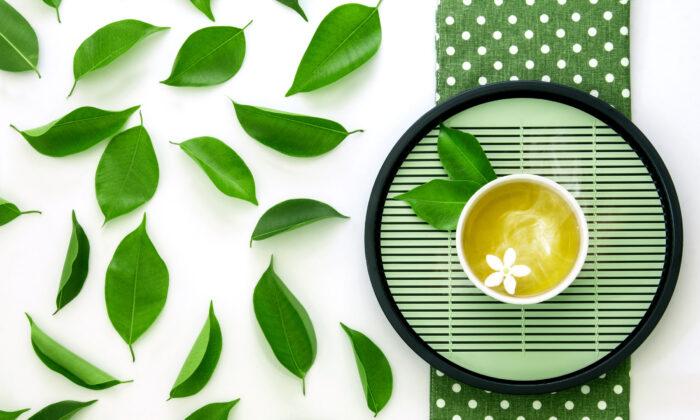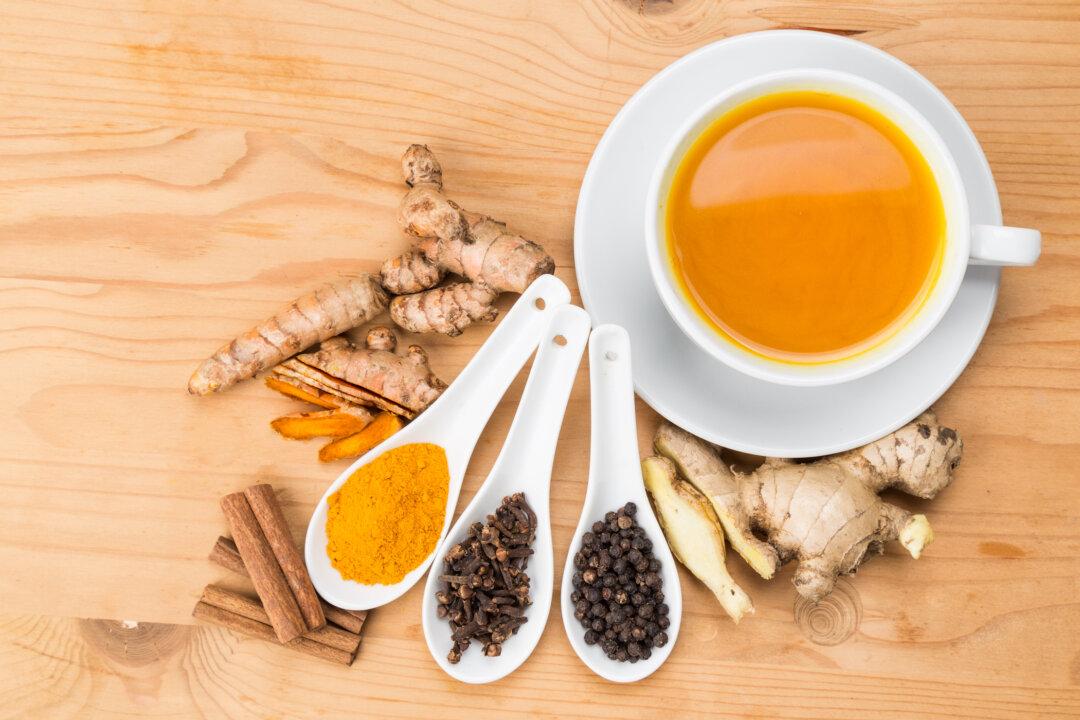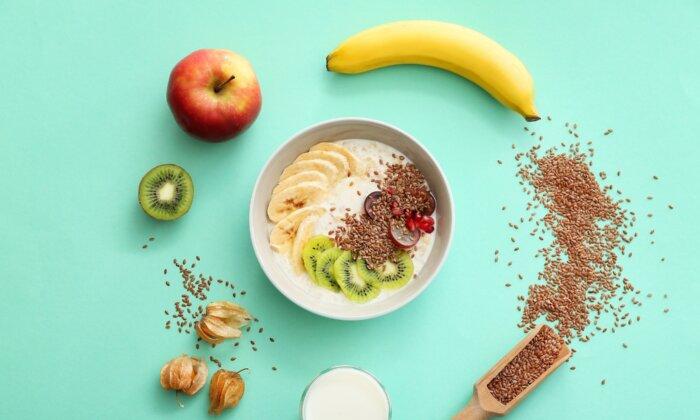Green tea may help with athlete’s foot, dental plaque, acne, impetigo, and bladder infections, but if it’s so good at killing bacteria, what may it do to our gut flora?
Which plant should we give for which skin disease? There have been thousands of studies published to date about the health effects of green tea, but it wasn’t until fairly recently that researchers have begun to look at the possibility of using green tea for the prevention and treatment of infections. Patents have been taken out on the “antibacterial, antifungal, and antiviral properties of tea.” Let’s review some of the evidence.
In terms of fungal infections, green tea compounds “demonstrated…potent antifungal activity…against” the primary cause of athlete’s foot, fungal nail infections, jock itch, and ringworm—comparable, in some cases, to powerful antifungal drugs like fluconazole. Okay, but this is in a petri dish.
How about a green tea foot bath for athlete’s foot fungus between the toes? Evidently, tea leaves were once used as “a folk remedy” for the fungus. So, why not put it to the test? And indeed, a once-a-day 15-minute diluted green tea foot bath led to a significant improvement in symptoms, compared to the control variable.
Green tea baths also appeared to help with fungus-associated atopic dermatitis, though there was no control group, and full-strength green tea may help clear candida yeast from poorly cleaned dentures.
How about the bacteria that cause plaque and gingivitis? Even a 2 percent green tea mouthwash was found to be effective. Yes, you should be able to control plaque just with proper brushing and flossing, but with an emphasis on “proper”—most people don’t brush the recommended 4 minutes a day; so, a dilute green tea mouthwash may help.
Now, in terms of strictly plaque bacteria-killing ability, green tea got beat out by a “garlic with lime mouth rinse,” but I think I’ll just stick with the green tea, thank you very much. Especially when green tea appears to not just kill plaque bugs directly, but also boost the “antibacterial capacity” of saliva after you drink it.
What about green tea for acne? Six weeks of a 2 percent green tea lotion cut the number of pimples by more than half and significantly reduced the severity, making it a cheap, effective treatment for acne.
Impetigo is another bacterial skin infection that can affect the face, but a “tea ointment” can provide an 80 percent cure rate, on par with topical or oral antibiotics.
So, where we stand now: the test tube data look good, but there has yet to be a single study to put it to the test. So, it should, at this point, just be used as an adjunct therapy for bladder infections. But, “[w]ith emerging multidrug-resistant organisms,” green tea certainly holds potential.
Wait a second, though. If it’s so good at killing bacteria, if we drink green tea, might we be killing the good bacteria in our gut? No, that’s the amazing thing; a great advantage against other bacteria-killing agents is that green tea has no effect [on our] intestinal flora. But, that may actually not be true. Drinking green tea may actually boost the levels of our good bacteria, by acting “as a prebiotic and,” thereby, “improv[ing] the colon environment.”
Sources cited
- Noormandi A, Dabaghzadeh F. Effects of green tea on Escherichia coli as a uropathogen. J Tradit Complement Med. 2014 Dec 16;5(1):15-20.
- Sarin S, Marya C, Nagpal R, Oberoi SS, Rekhi A. Preliminary Clinical Evidence of the Antiplaque, Antigingivitis Efficacy of a Mouthwash Containing 2% Green Tea - A Randomised Clinical Trial. Oral Health Prev Dent. 2015;13(3):197-203.
- Reygaert W, Jusufi I. Green tea as an effective antimicrobial for urinary tract infections caused by Escherichia coli. Front Microbiol. 2013 Jun 18;4:162.
- Reygaert WC. The antimicrobial possibilities of green tea. Front Microbiol. 2014 Aug 20;5:434.
- Thomas A, Thakur S, Mhambrey S. Comparison of the antimicrobial efficacy of chlorhexidine, sodium fluoride, fluoride with essential oils, alum, green tea, and garlic with lime mouth rinses on cariogenic microbes. J Int Soc Prev Community Dent. 2015 Jul-Aug;5(4):302-8.
- Lin SP, Li CY, Suzuki K, Chang CK, Chou KM, Fang SH. Green tea consumption after intense taekwondo training enhances salivary defense factors and antibacterial capacity. PLoS One. 2014 Jan 30;9(1):e87580.
- Jin JS, Touyama M, Hisada T, Benno Y. Effects of green tea consumption on human fecal microbiota with special reference to Bifidobacterium species. Microbiol Immunol. 2012 Nov;56(11):729-39.
- Elsaie ML, Abdelhamid MF, Elsaaiee LT, Emam HM. The efficacy of topical 2% green tea lotion in mild-to-moderate acne vulgaris. J Drugs Dermatol. 2009 Apr;8(4):358-64.
- Ikeda S, Kanoya Y, Nagata S. Effects of a foot bath containing green tea polyphenols on interdigital tinea pedis. Foot (Edinb). 2013 Jun-Sep;23(2-3):58-62.
- Yiannakopoulou ECh. Recent patents on antibacterial, antifungal and antiviral properties of tea. Recent Pat Antiinfect Drug Discov. 2012 Apr;7(1):60-5.
- Antunes DP, Salvia AC, de Araújo RM, Di Nicoló R, Koga Ito CY, de Araujo MA. Effect of green tea extract and mouthwash without alcohol on Candida albicans biofilm on acrylic resin. Gerodontology. 2015 Dec;32(4):291-5.
- Kim HK, Chang HK, Baek SY, Chung JO, Rha CS, Kim SY, Kim BJ, Kim MN. Treatment of Atopic Dermatitis Associated with Malassezia sympodialis by Green Tea Extracts Bath Therapy: A Pilot Study. Mycobiology. 2012 Jun;40(2):124-8.
- Sharquie KE, al-Turfi IA, al-Salloum SM. The antibacterial activity of tea in vitro and in vivo (in patients with impetigo contagiosa). J Dermatol. 2000 Nov;27(11):706-10.
- Reuter J, Wölfle U, Weckesser S, Schempp C. Which plant for which skin disease? Part 1: Atopic dermatitis, psoriasis, acne, condyloma and herpes simplex. J Dtsch Dermatol Ges. 2010 Oct;8(10):788-96.
- Zink A, Traidl-Hoffmann. Green tea in dermatology--myths and facts. J Dtsch Dermatol Ges. 2015 Aug;13(8):768-75.
- Park BJ, Taguchi H, Kamei K, Matsuzawa T, Hyon SH, Park JC. In vitro antifungal activity of epigallocatechin 3-O-gallate against clinical isolates of dermatophytes. Yonsei Med J. 2011 May;52(3):535-8.
- Yang CS, Chen L, Lee MJ, Balentine D, Kuo MC, Schantz SP. Blood and urine levels of tea catechins after ingestion of different amounts of green tea by human volunteers. Cancer Epidemiol Biomarkers Prev. 1998 Apr;7(4):351-4.








